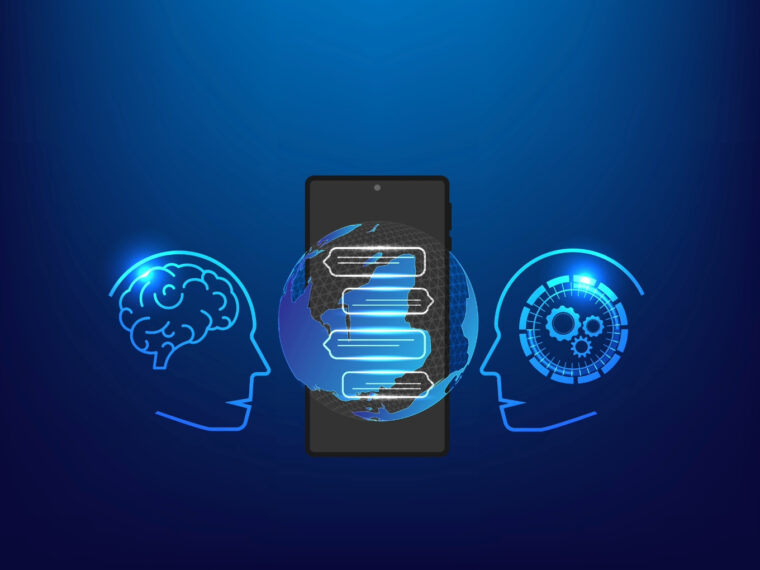
The need to upskill India’s tech talent is critical. Why? Because India has perhaps the most to gain or lose when it comes to the impact of Generative AI. A survey by ServiceNow found that India faces a critical need to upskill 1.62 crore workers in AI and automation, creating 4.7 million new jobs in technology by 2027 to meet the nation’s skill deficit. ... Now, the question is, can Generative AI help train such a large young population? Yes! This technology can create personalized learning paths. With modules integrated with AI to optimize outcomes, students can learn better with real-time feedback and take advantage of a more customized learning experience. If India has to become a global economic superpower, engineers must become tech-agnostic and adaptable in a world that’s changing fast. A Generative AI layer must be integrated into their education modules. This will equip them with cutting-edge skills and ensure versatility – from software developers to prompt engineers, enabling them to navigate diverse technological domains.
5 Ways To Demonstrate Leadership Skills In A Team Meeting

Don't just speak to be heard; speak to provide tangible solutions. Leaders are
always thinking about innovative ways to drive forward positive business
outcomes, and it's your responsibility in these meetings to think of creative
solutions to the challenges your team is facing. Even if you don't have the
complete solution yet, make some recommendations with a "What if we tried XYZ
approach?" This engages other team members and shows that you are confident
with sharing your ideas, while simultaneously ensuring everyone is included
and feels heard—a mark of a true leader. ... One of the most difficult and
embarrassing situations any professional could be placed in is to acknowledge
when they've made a mistake or accidentally jeopardized the success of the
team project. But it's the bravest thing to do, and it's an essential quality
of a rising leader to take ownership for your mistakes. Refuse to cast blame
on others or talk behind your colleagues' back, because this can destroy
trust. Instead seek ways to rectify the situation and actively discuss
solutions.
How can AI and advanced analytics streamline due diligence processes in financial industries

In an era of increasing digital transactions, customer due diligence (CDD)
demands robust identity verification processes. AI brings biometric data,
document analysis, and identity validation methods to the forefront, enhancing
the accuracy and speed of customer due diligence. OCR, face match, liveness
detection, match logic, and digital address verification facilitate
contactless KYC and paperless onboarding. These technologies not only
streamline onboarding processes but also contribute to a more secure and
fraud-resistant financial ecosystem. Staying compliant with an ever-changing
regulatory landscape is a perpetual challenge for financial institutions. AI
provides a dynamic solution by automating the monitoring and adaptation to
regulatory changes. Leveraging data analytics to best utilise and parse
alternate data sources, such as utility bills, financial account data, etc.,
can help further track customer behaviour while empowering the team to
identify discrepancies and stay compliant. From anti-money laundering (AML) to
know-your-customer (KYC) tech, AI ensures that due diligence processes remain
effective and consistently aligned with the latest regulatory
standards.
The World Depends on 60-Year-Old Code No One Knows Anymore

The problem is that very few people are interested in learning COBOL these
days. Coding it is cumbersome, it reads like an English lesson (too much
typing), the coding format is meticulous and inflexible, and it takes far
longer to compile than its competitors. And since nobody's learning it
anymore, programmers who can work with and maintain all that code are a
increasingly hard to find. Many of these "COBOL cowboys" are aging out of the
workforce, and replacements are in short supply. ... If it proves successful,
the watsonx code assistant could have huge implications for the future, but
not everyone is convinced it's a silver bullet that IBM says it is. Many who
remember IBM’s previous AI experiment, Watson Health, are hesitant to trust
another big AI project from the company because the previous one failed so
miserably and didn't deliver on its high-flying promises. Gartner
Distinguished Vice President and Analyst, Arun Chandrasekara is also skeptical
because “IBM has no case studies, at this time, to validate its claims,” he
says.
Tech Works: How to Build a Life-Long Career in Engineering

As Hightower put it, “You get to move as fast as you’re willing to believe
that you can. You identify a problem and you execute it.” Aim to be agile in
mindset and practice as long as you can, both with your organization and with
your own career. Nothing is precious. Always look for opportunities to learn.
If you get stuck with one language or framework, it limits where you can move
and also your ability to change. It may even have you wasting time rebuilding
things in your framework of choice — like Hightower acknowledged he used to do
with Python. ... IT is a massive cost center that often demands an explanation
from an organization’s budget makers, especially with a recession looming. An
underappreciated benefit of platform engineering, for instance, is that it can
enable a conversation between the tech side and the business side. Developers
and engineers benefit from this conversation. They feel a deeper sense of
purpose when their work is more closely connected to business goals. That
means, especially in a time of increased automation, storytelling is of great
value. To act as a translator and context giver can help boost an engineer’s
value.
Bridging the gap between cloud vs on-premise security
Cloud-native security architectures like SASE and SSE can offer the east-west
protection typically delivered by a data center firewall by rerouting all
internal traffic through the closest point of presence (PoP). Unlike a local
firewall that comes with its own configuration and management constraints,
firewall policies configured in the SSE PoP can be managed via the platform’s
centralized management console. ... As security functions move increasingly to
the cloud, it’s crucial not to lose sight of the controls and security
measures needed on-site. Cloud-native protections aim to increase coverage
while reducing complexities and boosting convergence. As critical as it is to
enable east-west traffic protection within SASE and SSE architectures, it’s
equally important to maintain the unified visibility, control, and management
offered by such platforms. To achieve this, organizations must avoid getting
carried away by emerging threats and adding back disparate security
solutions.
5 tweaks every developer should make in Windows 11

The new Windows Terminal is nothing short of fantastic. It's a night-and-day
improvement that allows you to run Powershell, cmd, and WSL sessions within
one window. It's customizable, has great tab support, and is even open-source.
It's got a similar JSON configuration for settings as VSCode, which is well
worth exploring, and the inbuilt GUI menus allow you to set your default shell
among a range of other things. The new terminal also supports side-by-side
windows or split panes, and background opacity settings. ... While Microsoft
has made great strides in recent years trying to win back developers, the
Windows file system has often been a pain point. Developers have long been
used to a Linux/Unix file system, where managing and creating thousands of
small files for dependencies is of trivial impact on the overall system
performance, and many common tools have been built with this in mind. NTFS has
already been known to suffer from a performance gap with the defacto Linux
standard ext4, and Windows Defender's real-time protection can slow this down
even further.
Data Observability: Reliability in the AI Era
Data observability is characterized by the ability to accelerate root cause
analysis across data, system, and code and to proactively set data health SLAs
across the organization, domain, and data product levels. ... Data engineers
are going to be building more pipelines faster (thanks Gen AI!) and tech debt
is going to be accumulating right alongside it. That means degraded query,
DAG, and dbt model performance. Slow running data pipelines cost more, are
less reliable, and deliver poor data consumer experience. That won’t cut it in
the AI era when data is needed as soon as possible. Especially not when the
economy is forcing everyone to take a judicious approach with expense. That
means pipelines need to be optimized and monitored for performance. Data
observability has to cater for it. ... This will shock no one who has been in
the data engineering or machine learning space for the last few years, but
LLMs perform better in areas where the data is well-defined, structured, and
accurate. Not to mention, there are few enterprise problems to be solved that
don’t require at least some context of the enterprise.
Top 9 Cybersecurity Trends in 2024

Looking to the future of cybersecurity, companies will need to implement new
cyber defenses to combat info stealer malware, he adds. Organizations should
seek comprehensive malware remediation strategies to neutralize the stolen
data before it’s used for other cyber incidents. “Session cookies, passwords,
and APIs can remain active for weeks or months after they were initially
stolen, leaving organizations vulnerable to follow-up or repeat attacks using
the same data,” according to Hilligoss. “A holistic post-infection remediation
plan that includes monitoring the dark web for malware-stolen data allows
enterprises to invalidate any compromised sessions and patch vulnerabilities
before criminals use the information to cause harm.” ... In addition, the SEC
charges against the SolarWinds chief information security officer (CISO) will
change that role in 2024, according to Thomas Kinsella, co-founder and chief
customer officer at Tines, a security workflow automation company. The SEC’s
decision means more cybersecurity issues will escalate to boardroom issues as
CISOs force the entire company to accept the risk rather than shouldering it
alone.
Turmoil at OpenAI shows we must address whether AI developers can regulate themselves
In the background, there have been reports of vigorous debates within OpenAI
regarding AI safety. This not only highlights the complexities of managing a
cutting-edge tech company, but also serves as a microcosm for broader debates
surrounding the regulation and safe development of AI technologies. Large
language models (LLMs) are at the heart of these discussions. LLMs, the
technology behind AI chatbots such as ChatGPT, are exposed to vast sets of
data that help them improve what they do – a process called training. However,
the double-edged nature of this training process raises critical questions
about fairness, privacy, and the potential misuse of AI. Training data
reflects both the richness and biases of the information available. The biases
may reflect unjust social concepts and lead to serious discrimination, the
marginalising of vulnerable groups, or the incitement of hatred or violence.
Training datasets can be influenced by historical biases.
Quote for the day:
“The road to success and the road to
failure are almost exactly the same.” -- Colin R. Davis
No comments:
Post a Comment